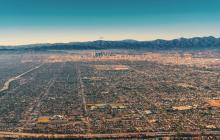Broadband Infrastructure Bill: The Good, The Bad & The Ugly
The bipartisan infrastructure bill, which includes $65 billion for expanding access to reliable, high-speed Internet service, passed in the U.S. Senate yesterday. The full text of the bill, posted on U.S. Sen. Krysten Sinema’s (D-Arizona) website, appears to be identical to the draft of the bill detailed here by the law firm Keller & Heckman.
For those of us who favor local Internet choice, the bill is a mixed bag filled with The Good, The Bad, and The Ugly. Let’s start with …
The Good
Of the $65 billion allocated in the bill, $42 billion of that is to fund the deployment of broadband networks in “unserved” and “underserved” parts of the country. The good part of that is the money will be sent to the states to be distributed as grants, which is better than handing it over to the FCC for another reverse auction. The FCC’s track record on reverse auctions is less than encouraging, and state governments are at least one step closer to local communities who have the best information on where broadband funding is needed.
In a nod to community broadband advocates and general common sense, the bill requires States to submit a “5-year action plan” as part of its initial proposal that “shall be informed by collaboration with local and regional entities.” It goes further in saying that those initial proposals should “describe the coordination with local governments, along with local and regional broadband planning processes,” in accordance with the NTIA’s “local coordination requirements.”
And the bill specifically says that when States award the grant money, they “may not exclude cooperatives, nonprofit organizations, public-private partnerships, private companies, public or private utilities, public utility districts, or local governments from eligibility for such grant funds.”



